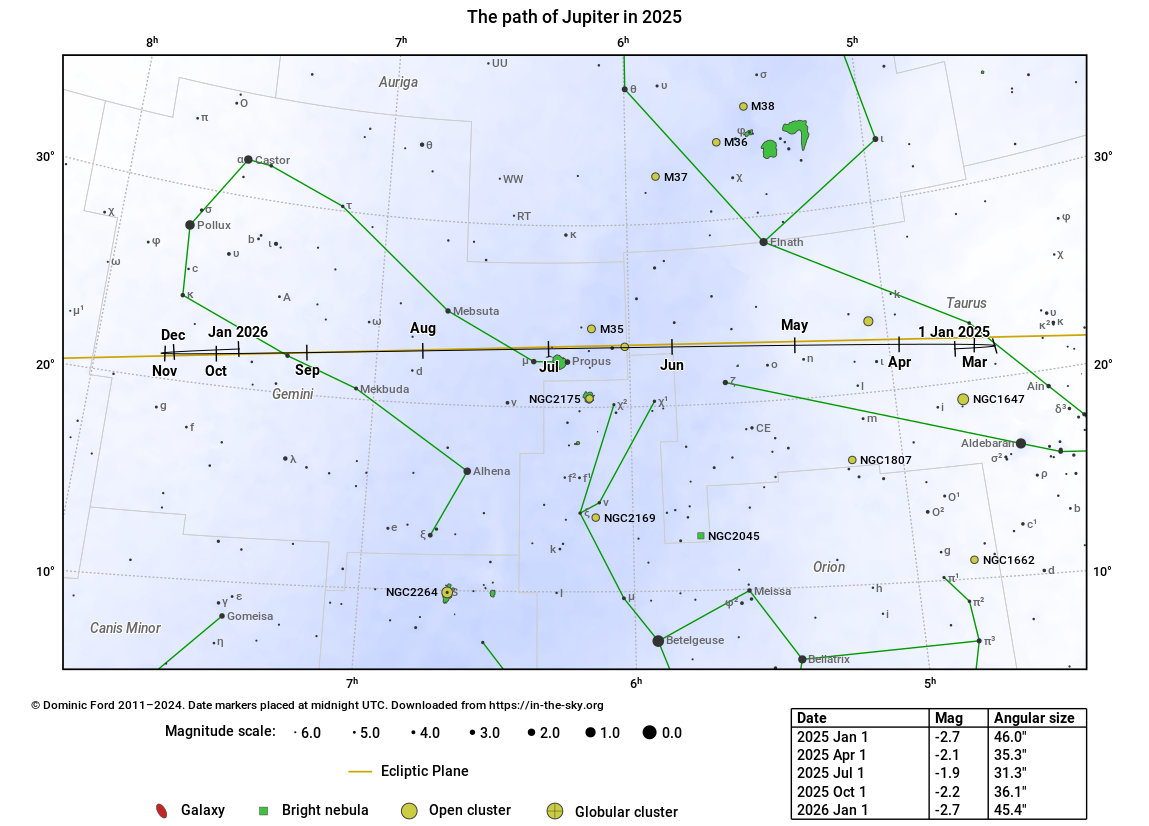Jupiter (Planet)

© NASA/Cassini
Finder chart

Please wait
Loading 0/4
Click and drag to rotate
Mouse wheel to zoom in/out
Touch with mouse to dismiss
Click and drag the chart above to pan around the sky, or use the mouse wheel to zoom.
Click to enlarge.
From South El Monte
,
Jupiter is visible in the morning sky, becoming accessible around 19:11, when it reaches an altitude of 7° above your eastern horizon. It will then reach its highest point in the sky at 01:32, 77° above your southern horizon. It will be lost to dawn twilight around 06:33, 23° above your western horizon.
|
Name
Jupiter
|
Object type
Superior planet
|
Current position| Computed for: | 20 December 2025 |
| Right ascension: | 07h37m [2] |
| Declination: | +21°46' [2] |
| Constellation: | Gemini |
| Magnitude: | -2.63 (V) [1]
|
| Angular diameter: | 44.9 arcsec[2] |
| Distance: | 4.29 AU
35.71 lightmin [2] |
Orbital elements [2]| Semi-major axis: | 5.20 AU |
| Eccentricity: | 0.048386 |
| Inclination: | 1.30° |
| Longitude ascending node: | 100.47° |
| Argument of perihelion: | -85.75° |
| Epoch of elements: | 1 Jan 2000 |
| Mean Anomaly at epoch: | 19.67° |
| Absolute mag (H): | -9.38 [1] |
| Slope parameter (n): | 2.00 [1] |
Derived quantities| Perihelion: | 4.95 AU |
| Aphelion: | 5.45 AU |
| Orbital period: | 11.87 years |
Sources| [1] | Robin M. Green, Spherical Astronomy, 1985, ISBN 0-521-31779-7 |
| [2] | Explanatory Supplement to the Astronomical Almanac, 2013, Urban & Seidelmann, Eds., Table 8.7, ISBN 978-1-891389-85-6 |
Visibility from South El Monte
All times shown in South El Monte local time.
Printable finder charts
Share



